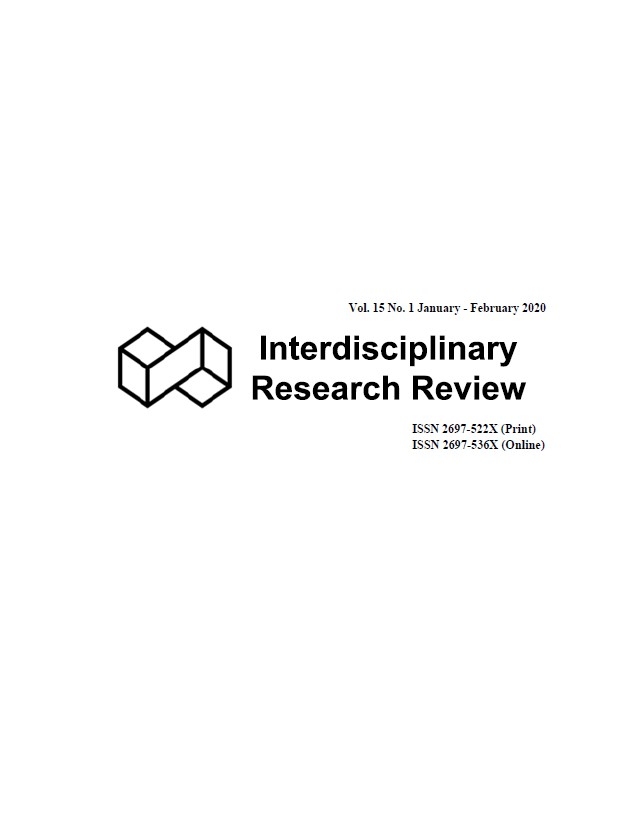Exploration of antibiotic usage pattern in dental professionals
Main Article Content
Abstract
To explore the antibiotic treatment pattern among dental professionals, who working in Dental hospital, Faculty of Dentistry, Mahidol University. A self-administered questionnaire was used in this study. The questionnaire was sent to dental professionals at Dental hospital, Faculty of Dentistry, Mahidol University. The questionnaire was included demographic data and pattern of antibiotic treatment and usage. Information was collected on the number and names of antibiotic and prescription data. All result was analyzed with descriptive statistics using Statistical Package for Social Science (IBM SPSS version 22, USA). 100% of dental professionals did not prescribe antibiotics to manage oral diseases in cases of halitosis and orthodontic treatment. More than 80% of dental professionals specifically prescribed antibiotics in cases of endodontic treatment, orofacial infections and surgical removal of impacted tooth, and more than 50% of dental professionals prescribed antibiotics in dental
abscess (pericoronal abscess, dento-alveolar abscess and periapical abscess), extraction by open method, swelling condition, flap surgery and implant placement. But did not use antibiotics in simple tooth fracture, dental caries, apical periodontitis and dry socket. Regarding to the situation questions, it was found that 96.15% of dental professionals chose to prescribe Penicillin as the first-choice of localized infection and 100% of dental professionals prescribed Clindamycin in case of Penicillin allergy. Some of dental professionals potentially had a misconception in indications of antibiotics prophylaxis usage in congenital heart disease and prosthetic cardiac valve. There was still an irrational use of antibiotic within dental practitioners, which may lead to the issue of antibiotic resistance. Thus, the need for rational prescribing should be considerably for further developing of
antibiotic usage program in Dental hospital.
Article Details
References
World Health Organization, Rational use of Medicines, Avail-able from: https://www.who.int/medicines/areas/rationaluse/en/, (accessed January 2020).
S. Mehta, N. Gogtay, From the pen to the patient: Minimis-ing medication errors, Journal of Postgraduate Medicine 51(1)(2005) 3–4.
C. W. Stratton, Dead bugs don’t mutate: susceptibility issuesin the emergence of bacterial resistance, Emerging InfectiousDiseases 9(1) (2003) 10–16.
A. Sharma, Antimicrobial resistance: no action today, nocure tomorrow, Indian Journal of Medical Microbiology 29(2)(2011) 91–92.
World Health Organization, World Health Day–7 April 2011,Available from: https://www.who.int/world-health-day/2011/en/, (accessed May 2019).
F. Marra, D. George, M. Chong, S. Sutherland, D. M. Patrick,Antibiotic prescribing by dentists has increased: why?, TheJournal of the American Dental Association 147(5) (2016)320–327.
P. Rochanadumrongkul, S. Chaimanakarn, Characteristics ofadverse drug reactions and their antidotes in a dental hospital inBangkok, Thailand, Journal of Thai Interdisciplinary Research13(2) (2018) 56–60.
American association of endodontists, AAE Guidance on theUse of Systemic Antibiotics in Endodontics, Available from:https://www.aae.org/specialty/wp-content/uploads/sites/2/2017/06/aaesystemic-antibiotics.pdf, (accessed May 2019).
N. Termine, V. Panzarella, D. Ciavarella, L. Lo Muzio, M.D’Angelo, A. Sardella, D. Compilato, G. Campisi, Antibioticprophylaxis in dentistry and oral surgery: use and misuse, In-ternational Dental Journal 59(5) (2009) 263–270.
G. A. Singh, H. Morrissey, A. Rahman, A systematic reviewand meta-analysis evaluating antibiotic prophylaxis in dentalimplants and extraction procedures, Medicina (Kaunas) 54(6)(2018) 95.
Shweta, S. K. Prakash, Dental abscess: A microbiological re-view, Dental Research Journal 10(5) (2013) 585–591.
G. Karibasappa, A. Sujatha, Antibiotic resistance-a concernfor dentists?, IOSR Journal of Dental and Medical Sciences13(2) (2014) 112–118.
A. Spagnolo, G. Ottria, D. Amicizia, F. Perdelli, M.L.Cristina, Operating theatre quality and prevention of surgicalsite infections, Journal of Preventive Medicine and Hygiene54(3) (2013) 131–137.
J. Park, M. Tennant, L. J. Walsh, E. Kruger, Is there a consen-sus on antibiotic usage for dental implant placement in healthypatients?, Australian Dental Journal 63(1) (2018) 25–33.
G. M. S. Soares, L. C. Figueiredo, M. Faveri, S.C. Cortelli,P.M. Duarte, M. Feres, Mechanisms of action of systemic an-tibiotics used in periodontal treatment and mechanisms of bac-terial resistance to these drugs, Journal of Applied Oral Science20(3) (2012) 295–309.
S. S. Oberoi, C. Dhingra, G. Sharma, D. Sardana, Antibioticsin dental practice: how justified are we, International DentalJournal 65(1) (2015) 4–10.
R. A. Nishimura, C. M. Otto, R. O. Bonow, B. A. Carabello, J.P. Erwin, R. A. Guyton, P. T. O’gara, C. E. Ruiz, N. J. Skubas,P. Sorajja, 2014 AHA/ACC guideline for the management ofpatients with valvular heart disease: a report of the AmericanCollege of Cardiology/American Heart Association Task Forceon Practice Guidelines, Journal of the American College of Cardiology 63(22) (2014) e57–e185.


